DeWalt DDF211022 Handleiding
DeWalt
Niet gecategoriseerd
DDF211022
Bekijk gratis de handleiding van DeWalt DDF211022 (32 pagina’s), behorend tot de categorie Niet gecategoriseerd. Deze gids werd als nuttig beoordeeld door 291 mensen en kreeg gemiddeld 4.1 sterren uit 146 reviews. Heb je een vraag over DeWalt DDF211022 of wil je andere gebruikers van dit product iets vragen? Stel een vraag
Pagina 1/32

Model P2201 Cat. No. DDF211022P
P2201
1
P2201
OPERATING INSTRUCTION MANUAL
DO NOT OPERATE THE P2201 TOOL UNTIL
YOU HAVE READ THIS MANUAL AND RECEIVED THE PROPER TRAINING
ACCORDING TO ANSI STANDARD A 10.3-1995.
™
PRIOR TO OPERATING THE P2201 TOOL,
STUDY THIS MANUAL CAREFULLY AND DEVELOP A THOROUGH
UNDERSTANDING OF THE CONTENTS.
PROPER TRAINING ACCORDING TO THE CURRENT ANSI
STANDARD A 10.3, SAFETY REQUIREMENTS FOR POWDER
ACTUATED FASTENING SYSTEMS MUST BE COMPLETED AND
A DEWALT QUALIFIED OPERATOR CARD MUST BE OBTAINED
PRIOR TO OPERATION OF THE TOOL. STATE, LOCAL, OR
OTHER REGULATIONS SHOULD ALSO BE FOLLOWED. LAWS,
REGULATIONS, AND STANDARDS REGARDING THE USE
OF POWDER ACTUATED TOOLS MAY PERIODICALLY BE
REVISED. ANY SUCH REVISIONS MAY CHANGE THE SAFETY
AND OPERATING PROCEDURES DESCRIBED IN THIS MANUAL.
DEWALT, INC. IS NOT RESPONSIBLE FOR ANY SUCH REVISIONS
WHICH OCCUR AFTER PUBLICATION OF THIS MANUAL. IT IS THE
RESPONSIBILITY OF THE USER TO MAINTAIN FAMILIARITY WITH
THE CURRENT LAWS, REGULATIONS, AND STANDARDS THAT
APPLY TO THE POWDER ACTUATED TOOL.
TO AVOID SERIOUS INJURY OR DEATH:
NEVER CLOSE TOOL WITH ANY PART OF HAND OVER MUZZLE END.
OPERATORS AND BYSTANDERS MUST WEAR
EYE AND HEARING PROTECTION.
R2200
R22
ALWAYS
ASSUME
TOOL IS LOADED.
DO NOT PLACE A
FINGER ON THE
TRIGGER
OF LOADED TOOL UNTIL MUZZLE END IS AGAINST WORK
SURFACE AND YOU ARE READY TO MAKE A FASTENING. NEVER
PLACE YOUR HAND OVER THE MUZZLE WITH A POWDER LOAD IN
THE TOOL. IF THE TOOL ACCIDENTALLY DISCHARGES THE PISTON
OR FASTENER MAY PENETRATE YOUR HAND RESULTING IN
SERIOUS INJURY.
TOOL OPERATION MUST READ AND UNDERSTAND
THE ENTIRE TOOL MANUAL AND MUST COMPLETE
THE OPERATOR’S EXAM ON THE LAST PAGE. THE
TOOL WARRANTY WILL NOT BE VALID UNTIL THE TEST IS
RECEIVED, WITH A COPY OF YOUR RECEIPT, AND REVIEWED
BY DEWALT, INC.
Warranty
Three Year Limited Warranty
DEWALT will repair, without charge, any defects due to faulty
materials or workmanship for three years from the date of
purchase. This warranty does not cover part failure due to
normal wear or tool abuse. For further detail of warranty
coverage and warranty repair information, visit www.dewalt.
com or call 1-800-4-DEWALT (1-800-433-9258). This
warranty does not apply to accessories or damage caused
where repairs have been made or attempted by others. This
warranty gives you specific legal rights any you may have
other rights which vary in certain states or provinces.
In addition to the warranty, DEWALT tools are covered by our:
1 YEAR FREE SERVICE
DEWALT will maintain the tool and replace worn parts caused
by normal use, for free, any time during the first year after
purchase.
90 DAY MONEY BACK GUARANTEE
If you are not completely satisfied with the performance of
your DEWALT Powder Actuated Tool for any reason, you can
return it within 90 days from the date of purchase with a
receipt for a full refund – no questions asked.
FREE WARNING LABEL REPLACEMENT:
If your warning labels become illegible or are missing call
1-800-4-DEWALT (1-800-433-9258) for a free replacement.
Introduction
Thank you for purchasing the D WALT P2201 low velocity E
powder actuated tool. This tool will provide you with excellent
performance provided the steps for proper operation and
maintenance are followed. Powder actuated fastening
systems can provide a cost effective method of attaching
fixtures for light duty, static load conditions. The systems
provided by DEWALT consist of specially designed fasteners,
installation tools, and powder loads which are designed to
function in combination to provide optimum performance.
While powder actuated tools can provide one of the fastest
and economical means of fastening, they can also be
dangerous if they are not operated properly.
Prior to operating the P2201 tool, you must be properly
trained in the operation and maintenance of this tool and be
issued a DEWALT Qualified Operator Card. When using the
tool, you must have this card in your possession. As part
of the training process, you should read and understand
the contents of this instruction manual especially the safety
Low Velocity Powder
Actuated Fastening Tool
POW2273_manual_P2201_dewalt.indd 1 3/10/14 12:41 PM

P2201
Model P2201 Cat. No. DDF211022P
2
precautions.
Powder actuated tools may be operated only by properly
trained operators as described in ANSI Standard A 10.3,
Safety Requirements for Powder Actuated Fastening
Systems. For complete tool operation details, contact your
local DEWALT Branch office or distributor for training.
Remember, safety begins with you! It is your primary
responsibility when operating this tool. Failure to follow the
proper operating, maintenance, and safety procedures can
result in serious injury or death to yourself or bystanders.
In addition to the training provided, you should be familiar
with any local, state, and federal regulations. If you have any
questions which are not covered in this manual, contact your
local DEWALT Branch office or distributor.
Size Range
1/2” to 3” pin lengths, .22 caliber
Tool Description
The P2201 is a low velocity, single shot, .22 caliber tool
which can be used to install .300 head drive pins, 8mm
head drive pins and 1/4”-20 threaded studs, up to 3” in total
length. The P2201 is designed for maintenance or residential
contractors.
Technical Data
TOOL BODY PIN LENGTH TOOL LENGTH
Engineered Plastic 1/2” to 3” Total Length 12-1/2”
LOAD TYPE TOOL WEIGHT POWER LEVEL
.22 Gray ), Brown Caliber in lbs. 4.3
(
1
(
2)
Crimped “A”
Load
Green ), Yellow
(
3
(
4)
PIN TYPE
Ballistic Point Drive Pin, .300 Head Drive Pin, 8mm Head Drive Pin,
1/4”-20 Threaded Stud
P2201 Selection Guide
CAT NO. DESCRIPTION STD CTN.
DFC211022D P2201 Tool (Blister Pack) 1
52522 Piston 1
52510 Nose Piece 1
52512 Piston Reset Pin 1
Fastener Functioning
Prior to learning the safe operating
procedures for this tool, it is important
to understand how a powder actuated
fastener works. A powder actuated
fastener is considered to be a direct
drive or forced entry type of fastener
because it is driven directly into the
base material. The driving action causes tremendous forces
to be applied to the fastener. DEWALT powder actuated
fasteners are specially designed and manufactured using
an austempering process to withstand the forces imposed
during the driving operation. Only fasteners manufactured or
supplied by DEWALT should be used in this tool.
Functioning In Concrete
The performance of a powder actuated fastener when
installed into concrete or masonry base materials is based on
the following factors:
1. Strength of the base material
2. Hardness and concentration of the aggregate
3. Shank diameter of the fastener
4. Depth of embedment into the base material
5. Fastener spacing and edge distance
In addition to these factors, installation
tool accessories such as a stop
spall which reduces the tendency of
the concrete surface to spall during
the driving action can increase the
performance of the fastener.
When a powder actuated fastener
is driven into concrete, it displaces the
volume of concrete around the embedded
area of the fastener shank. As this
occurs, the concrete directly surrounding
the fastener is compressed and in turn
presses back against the shank of the
fastener. Additionally, the driving action
generates heat which causes particles within the concrete
to fuse to the shank of the fastener. This combination of
compression and fusion holds the fastener in the concrete
base material. A similar action occurs when fastening into
block masonry.
Generally, the performance of the fastener in a given
concrete strength will increase with greater embedment
depths in a certain range. Depending on the fastener style
and base material strength, embedment depths range from
5/8” to 1-1/2”. For depths greater than this range, there is
the possibility of fastener bending or fishhooking which may
decrease expected load capacities and create a safety hazard.
During the driving action, some localized surface spalling
of the
concrete may occur. Normally, this is a surface effect which
does not effect the performance of the fastener. However,
it may pose an aesthetic problem for exposed applications
where a fixture is not used. In cases such as this, two
methods can be used to improve the appearance of the
fastening. A stop spall adapter mounted on the powder
actuated tool can help to reduce surface spalling. Another
method used is to drive the fastener through a steel washer
to improve the appearance of the application.
Functioning In Steel
The load performance of a powder
actuated fastener when installed into
steel base materials is based on the
following factors:
1. Thickness of the steel
2. Tensile strength of the steel
3. Shank diameter of the fastener
4. Depth of point penetration through the steel
5. Fastener spacing and edge distance.
When a powder actuated fastener is driven into steel, it
displaces the steel laterally 360˚ around the shank of the
fastener. Since steel is an elastic material, it presses back
against the shank of the fastener to hold it in place. As the
diameter of the fastener shank is increased, the load capacity
obtained will generally increase provided the steel thickness
is sufficient to accept the fastener. To further increase
fastener performance in steel, some fasteners have a knurled
shank which allows the steel to form a key lock into the
grooves to provide higher capacities than those obtained with
a smooth shank. For optimum performance, the fastener
point should completely penetrate the steel. Normally, a
minimum of 1/4” is allowed for the point length. An increase
in performance can be expected until the fastener no longer
completely penetrates through the steel. At this point, the
elastic properties of the steel cause a compression force to
be developed at an angle against the fastener point which
Washer
Stop
Spall
1
2
POW2273_manual_P2201_dewalt.indd 2 3/10/14 12:41 PM

Model P2201 Cat. No. DDF211022P
P2201
3
reduces load capacity. In thicker steel base materials,
adequate load capacities may be obtained for applications in
which the point of the fastener does not fully penetrate the
steel. Job site performance tests are recommended.
Fasteners should not be used in areas that have been
welded or cut with a torch as these procedures may have
caused local hardening of the steel. Over driving of the fas-
tener should be avoided as the rebound created may reduce
the load capacity or cause damage to the fastener. When
fastening into unsupported long steel members, it may be
necessary to provide support in the area of the fastening to
prevent spring action which can cause inconsistent penetra-
tion and a reduction in load capacity.
Suitable Base Material
While powder actuated fasteners can be used successfully in
concrete, certain masonry materials, and A 36 steel, some
materials are completely unsuitable. Fasteners should never
be fired into hard or brittle materials such as cast iron, tile,
glass, or rock. These materials can shatter easily resulting in
a potential safety hazard. In addition, soft base materials
Surface
Shatters
Material
Cracks
Fastener Sinks in
with Average
Hammer Blow
Point
Flattens
No
Indent
such as wallboard, plaster, or wood are
not appropriate as the fastener could
pass completely through these
materials. The user should never guess
when fastening into any base material.
Failure to follow the recommended
installation and safety guidelines can
result in severe injury or death to the
tool operator and/or bystanders.
Center Punch Test
A center punch test should always be
performed to determine the suitability
of the base material for a powder
actuated fastening. This test is relatively
simple and can help to insure a safe,
successful fastening. Be sure to wear
the appropriate eye protection when
performing this test. To begin, select
the fastener to be used for the job.
Then, place the point of the fastener
against the proposed base material.
Strike the fastener with a single
hammer blow, then examine the point.
If the point of the fastener is not blunted and the base
material has a clear point indentation, it is acceptable to
proceed with the first test installation.
Use of a powder actuated system is not recommended if
the following occurs during the center punch test:
1. The fastener point has been blunted. This indicates that the
base material is too hard.
2. The base material cracks or shatters. This indicates that
the base material is too brittle.
3. When using an average hammer blow, the fastener
penetrates the base material easily. This indicates that the
base material is too soft.
Fastener Installation Requirements
It is important to understand the required minimum base
material thickness requirements along with the minimum
spacing and edge distance requirements. Failure to follow
these requirements can result in an unsuccessful fastening
and create a safety hazard.
Base Material Thickness
Concrete base material should be at
least three (3) times as thick as the
fastener embedment penetration. If the
concrete is too thin, the compressive
forces forming at the fasteners point can
cause the free face of the concrete to
break away. This can create a dangerous
condition from flying concrete and/
or the fastener and also results in a reduction of fastener
holding power. For applications in the face shell of concrete
masonry block, select a fastener length which will not
exceed the thickness of the face shell.
Fastener Penetration Guide
The following table lists typical embedment or penetration
depths expected in the base materials listed. The
penetration will vary depending on the density of the
material. This table should be used as a guide since the
consistency of these materials varies. When in doubt, a job
site performance test should be conducted.
DENSITY TYPICAL BASE MATERIAL PENETRATION
Soft Masonry Concrete block 1” -1-1/4”
Average Concrete Poured concrete 3/4” - 1”
Dense Concrete Pre-stressed/ 5/8” - 3/4”
pre-cast concrete
Edge Distance
3"
3"
Do not fasten closer than 3” from
the edge of concrete. If the concrete
cracks, the fastener may not hold.
Closer edge distances for applications
such as sill plates may be permitted
if specific fastener testing has been
conducted.
Spacing
Setting fasteners too close together
in concrete or masonry can cause
cracking. The recommended minimum
distance between fasteners is 3” center to center.
Fastener Length Selection In Concrete
For permanent applications using pins in concrete, first
determine the thickness of the fixture to be fastened. To this,
add the required embedment or penetration into the base
material. This will be the fastener shank length required.
For applications in the face shell of masonry block, select a
fastener length which will not exceed the thickness of the
face shell.
For removable applications with threaded studs, the
shank length required is equal to the embedment depth
required. To determine the minimum threaded length, add
the thickness of the fixture and the nut / washer thickness.
The nut and washer thickness is equal to the nominal thread
diameter. Do not over tighten threaded
parts. Maximum tightening torque
values are listed in the table below.
Use of a nut setter is recommended to
reduce the possibility of over tightening
the fasteners. For critical applications,
perform a job site test.
MAXIMUM TORQUE FOR 1/4” STUD MAXIMUM TORQUE FOR 3/8” STUD
(FT.-LBS.) (FT.-LBS)
2 4
2
3
1
Penetration
3x
Penetration
Fixture
Embedment
POW2273_manual_P2201_dewalt.indd 3 3/10/14 12:41 PM
Product specificaties
| Merk: | DeWalt |
| Categorie: | Niet gecategoriseerd |
| Model: | DDF211022 |
Heb je hulp nodig?
Als je hulp nodig hebt met DeWalt DDF211022 stel dan hieronder een vraag en andere gebruikers zullen je antwoorden
Handleiding Niet gecategoriseerd DeWalt
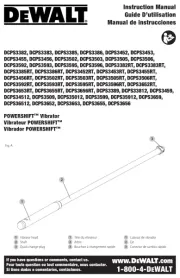
3 Augustus 2025
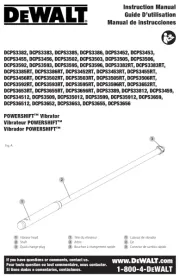
3 Augustus 2025
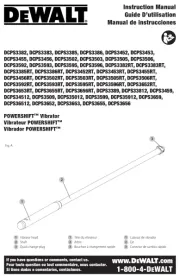
3 Augustus 2025
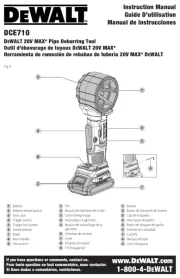
29 Juli 2025
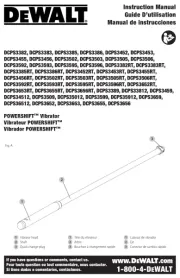
29 Juli 2025
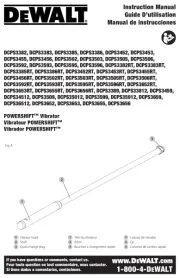
29 Juli 2025
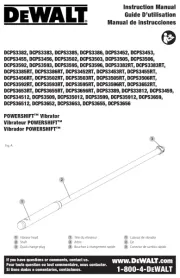
29 Juli 2025
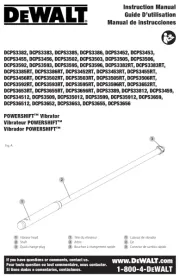
29 Juli 2025
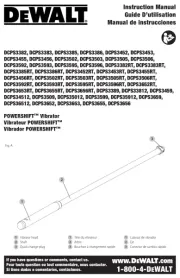
29 Juli 2025
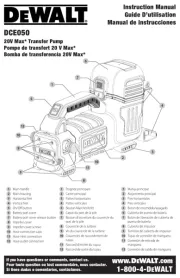
29 Juli 2025
Handleiding Niet gecategoriseerd
- Cable Matters
- Hitachi
- Lumantek
- EtiamPro
- Neff
- Pryme
- Milesight
- Adj
- Gtech
- NOCO
- Lupilu
- Neumärker
- Schellenberg
- Monacor
- Frient
Nieuwste handleidingen voor Niet gecategoriseerd

19 Augustus 2025
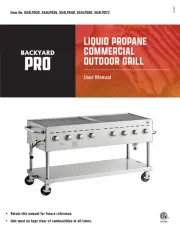
19 Augustus 2025
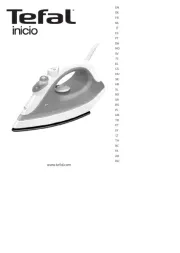
19 Augustus 2025
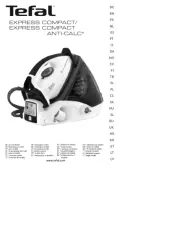
19 Augustus 2025
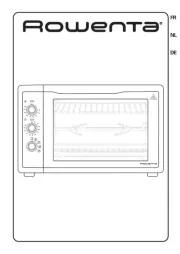
19 Augustus 2025

19 Augustus 2025
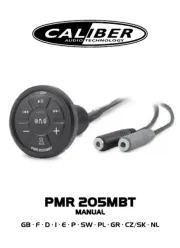
19 Augustus 2025
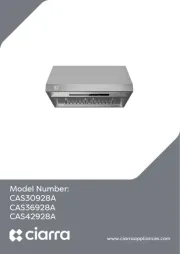
19 Augustus 2025
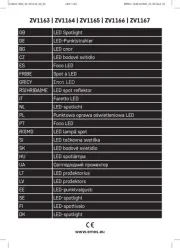
19 Augustus 2025

19 Augustus 2025